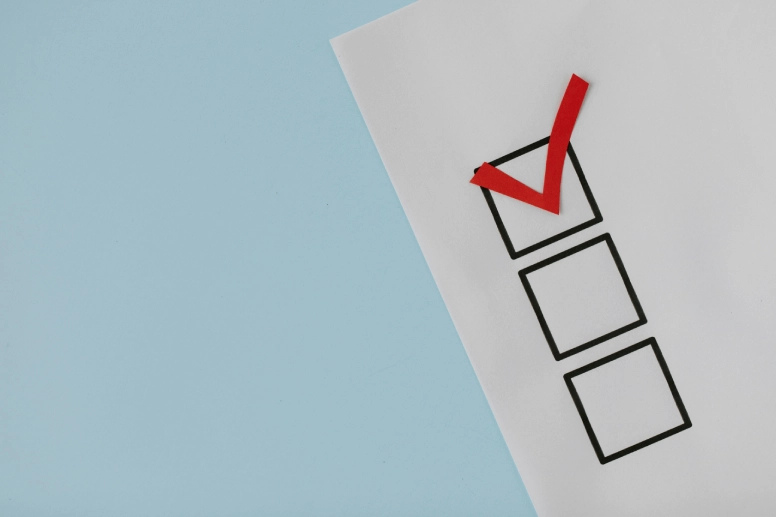Client Kickoff Calls: How to Set the Right Tone From Day One
Using a static document or a long email thread to align on a project? That’s yesterday’s strategy. Today, a well-run kickoff call is your best tool to get everyone on the same page and kick off client onboarding with clarity and confidence.
But What Is a Kickoff Call?
Simply put, a kickoff call begins a project immediately after your customer and you have determined the services you are going to deliver and have reached an agreement.
If you’re a business owner, this might be the perfect time to ensure that the project is aligned. You may introduce your client to your team, and you may also use this opportunity to both ask and answer questions.
The truth is that when you’re looking for a kickoff call meaning, you can’t just say that this is an easy call or a fast one. Instead, it’s a call that you want to use to make all the details clear and fill in any information that you’re still missing.
What Is a Kickoff Call: What to Expect
At Flowlu, our Customer Success team has a lot of experience with kickoff calls, and we make sure that we train all our employees to be prepared and know the best way to conduct a kickoff call, but also to follow up on it.
It’s vital that you know exactly what to expect. However, you need to remember that there isn’t a perfect recipe. You can’t simply follow a script and keep reading it. You need to adapt the “script” to each customer and always make sure that you know where you’re standing, where you need to go, and that you need to delegate your action items.
Remember that you won’t be the only one on the call; your client will be there too, as he also has his own expectations and his agenda. The sooner you know your customer’s expectations, the better your relationship with the client will be.
One of the essential things that you should always remember is that even though you may be prepared, calls don’t always go as you wanted them to. Thus, you should always expect the worst and be ready to turn the game in your favor to ensure that you can make the most out of the kickoff call. For example, you should expect technical questions, communication challenges, delays, no attendees or unexpected ones, adjust your agenda right on the spot, and say no when necessary.
The Pre-Call Checklist
Here’s your quick pre-call reality check:
- Contract is signed
- Deposit received
- Deliverables and timeline agreed
- Internal team briefed
- Customer received agenda
- Tools and logins prepped (Zoom for the call, Flowlu for tracking everything after it)
- Questions + client history reviewed
- Rapport-building questions in your back pocket
Prepare Yourself for the Call Like a Pro
Kickoff calls are already hard because you don’t want to forget about anything. So, going into one without preparing yourself is something that shouldn’t even cross your mind.
At Flowlu, we always say to our teams that we have got to be ready for our clients and meet their expectations. Here are some of the things our teams need to do to prepare:
#1: Review All Documents
Before you get into a kickoff call, you need to verify that you have all the documents you need from your customer. These include:
- Signed contracts
- Retainer or deposit should already be paid
- The deadline for final deliverables should already be set
- The deliverables are agreed upon
With these documents in your possession, you should take the time to revise them and remind yourself about the client’s expectations and needs, as well as the services that you will deliver. Besides, remember that you already converted this lead into a client — a huge part of the work is already done.
#2: Set Your Goals
Now that you have all the information you need about your client and the project at your fingertips, it’s time to set the goals for the kickoff call.
As we always say to our teams, the main goal is to ensure that we and the customer are perfectly aligned. This means that the details of the project need to be reviewed during the call. These include:
- Determining the goal of the project
- Creating an actionable plan with key deliverables
- Establishing a project timeline
- Confirming communication preferences
#3: Prepare for the Meeting
The better prepared you are for the meeting, the better it will be for everyone. If you’ve got all the paperwork in order, it gives your client space to focus on anything that might’ve been missed.
To guarantee that you are well prepared for the meeting, you should prepare the following materials:
- Emails that were exchanged about the project
- Notes that you took from prior conversations
- Any questions you may still have for your customer
- Answers from a previous questionnaire you may have asked the client to fill out
Use collaborative software like Flowlu, where you can link relevant notes, past messages, and task templates all in one place. It keeps everything at your fingertips — no digging around inboxes.
#4: Internal Kickoff Meeting:
During this meeting, all stakeholders and project team members need to know and understand both goals and action items. You may also use it to review your preparation and see if you’re still missing something.
Before you jump on the client call, sync internally using Flowlu’s project workspace. This is where your team can review goals, assign responsibilities, and update the agenda in real time.
Kickoff Call Agenda: What to Include
When you send a meeting invite to your customer, be sure to include the agenda. That way, they’ll know what to expect ahead of time.
Here’s a simple example of a kickoff call agenda:
- Welcome and instructions
- Project administration information (such as logins, when and where to communicate, etc.)
- Review of the project scope and goals
- Definitions of the timeline and key milestones
- KPIs and how success will be measured
- Risks and potential blockers
- Next steps
During the call, it’s a good idea to ask your customer a few key questions. Here are some you might want to include:
- Are there any other stakeholders that I need to know about?
- Can you please go through your objectives and goals in detail?
- Should I be aware of any risks?
- What’s your preferred communication method?
- What are the KPIs you want to use to measure the success of the project?
- Should I update you daily, weekly, or monthly?
A very important detail about this kind of meeting is how long it should last. This is a very common and understandable question. Overall speaking, the shorter the meeting, the better. The truth is that it shouldn’t take more than 30 minutes, and you only need to have the time to ask your questions and let the client answer them. When you know this, it will be easier to schedule it.
The last thing to keep in mind for your kickoff call agenda is building rapport. Show genuine enthusiasm, be open to answering questions, and make it clear you're there to help.
And don’t do all the talking — give your client space to share, too. You also need to give the client time to talk while you listen. In fact, the more the client talks about their goals and objectives for the project, the better it will be for you, since you’ll get a clearer picture of what he really wants.
After the Kickoff Call
Now that you’ve already made the call, you may believe that the task is complete. However, it’s not finished until you send your customer a recap email with everything that was discussed in the kickoff call. You can’t assume the client will remember everything — you need to follow up on it.
One of the most important things to keep in mind about this recap email is that it isn’t meant to be beautiful, but practical and useful. So, adding bullet points, underlined link resources and objectives, using @ to call out someone, and highlighting important words, sentences, names, or dates are things you should consider doing.
Here’s a recap email template for you to use:
Subject: [Recap] Project Kickoff – [Client Name] & [Your Company]
Hi [Client Name],
Thanks for the great kickoff call! Here’s a quick recap of what we covered:
Project Goal: [Insert goal]
Timeline: [Insert timeline + key milestones]
Communication: [Preferred channel + cadence]
KPIs: [List]
Outstanding Questions:
- [Question 1]
- [Question 2]
Next Steps:
- [Your Task] – due [date]
- [Client Task] – due [date]
Feel free to reply with edits or anything we missed. Excited to get started!
Best,
[Your Name]
If you’re using Flowlu, drop the recap directly into your project feed and @tag team members for action items. That way, everyone stays looped in — no extra email threads needed.
Bottom Line
Kickoff calls don’t need to be stressful. The more prepared and experienced you are, the better they will go. Even though you may be set for your first kickoff call, you need to bear in mind that nervousness is a part of it — but with time, it will get better.
Instead of thinking that this kickoff call is just one more boring task you need to complete, you should think of it as something enjoyable. After all, you’ll have a conversation with a client that will ensure you’re on the same page about the upcoming project.
Remember that clients are different, and you need to adapt to them. The perfect kickoff call is the one where, at the end, both your client and you are happy and excited. Use tools like Flowlu to assign tasks, track deliverables, and keep all your client and project data in one place. And remember: the goal isn’t just to start a project — it’s to start a partnership.
The kickoff calls help make sure everyone’s on the same page right from the project start. You go over the goals, timeline, what needs to get done to complete a project, and how you’ll all stay in touch. It’s like setting directions before a road trip.
Usually, it’s the project manager or whoever’s leading the project runs the kickoff meeting. They guide the conversation, answer questions, and make sure everyone knows what’s happening next during project implementation.
Once the kickoff call ends, the real work begins. You send a quick recap, confirm next steps, and get started with the project based on what was discussed.
The kickoff call doesn’t need to drag on — 20 to 30 minutes is usually enough. The goal is to get clear on the key project stuff and leave space for any questions, without overwhelming anyone.
Verify that the contract’s signed, the scope and timeline are agreed on, and your team knows what’s what. Have a clear agenda, go over past emails or notes, and write down any questions you still need to ask. A tool like Flowlu can help keep everything project-related organized in one place.















